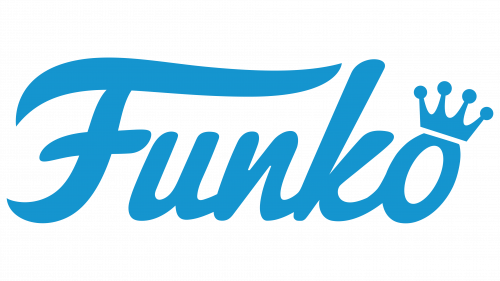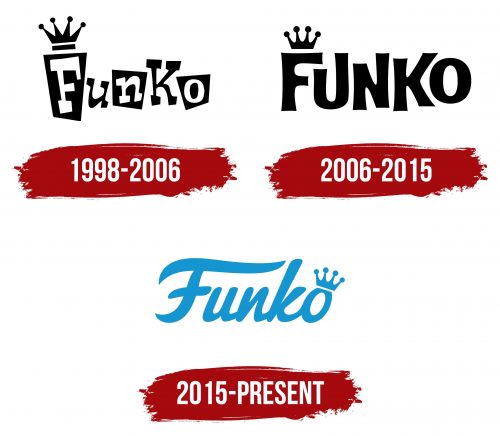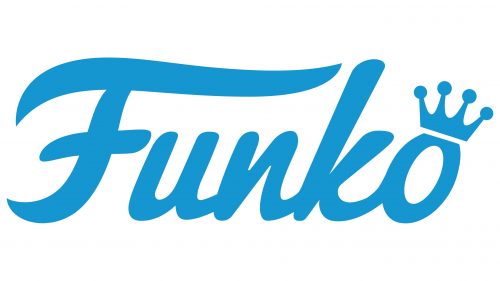The Funko logo is bright and cheerful, instantly grabbing attention. The emblem emphasizes the playful and entertaining nature of the brand, highlighting its uniqueness. Every element of the logo reflects the idea of exclusivity, as the company is focused on those passionate about collecting and fans of iconic characters. The company creates toys that become objects of desire for collectors, emphasizing the status and sophistication of their hobbies. It is more than just a brand — an opportunity to own something unique that brings joy and makes a collection stand out.
Funko: Brand overview
Mike Becker founded Funko in 1998 in Snohomish, Washington, as a small company focused on nostalgic toys, specifically bobbleheads. The company’s first product was a Big Boy restaurant mascot figurine. Becker, a fan of the character, couldn’t find a figure for him, so he decided to create his own, which became the foundation of the company’s early success.
In its early years, the business concentrated on producing officially licensed bobbleheads of various pop culture icons. It quickly gained a reputation for making high-quality collectible figures, which led to growing popularity among collectors.
In 2005, Mike Becker sold the company to his friend, Brian Mariotti. Under Mariotti’s leadership, the company expanded rapidly, broadening its product line and the number of licenses it held.
The brand introduced its most iconic product line, Pop! Vinyl, in 2010. These stylized figures with oversized heads became an instant hit among pop culture fans and collectors. The unique design allowed the company to create figures from nearly any franchise, including comic books, video games, TV shows, movies, and even real-life celebrities.
In 2011, the first exclusive Pop! Vinyl figures were released at San Diego Comic-Con, starting a tradition of producing limited-edition figures for conventions and various retailers, which further fueled demand among collectors.
In 2013, the company launched the Mystery Minis line, featuring small figures sold in blind boxes, adding an element of surprise to the collecting process.
Major growth occurred in 2015 when the company acquired Underground Toys, strengthening its presence in the European market. That same year, the brand opened its first retail location at Everett Memorial Stadium in Everett, Washington.
Two significant milestones took place in 2017. The company went public, listing its shares on the NASDAQ stock exchange, and also opened its first flagship store, Funko HQ, in Everett. This store became a destination for shopping and fans to immerse themselves in the brand’s culture.
In 2018, a second flagship store opened in Hollywood, California, which also became a popular destination for collectors and pop culture enthusiasts.
By 2019, the company had released its 20,000th unique Pop! Vinyl figure, showcasing the diversity of its product offerings. That same year, the company expanded into the board game industry by acquiring Forrest-Pruzan Creative.
Despite global challenges in 2020 and 2021, the company continued to grow by launching new product lines and forming partnerships with additional brands.
In 2022, the company acquired Mondo, a well-known producer of vinyl records and collectible posters, further expanding its reach into the premium collectibles market.
By 2023, the company had become a leading pop culture merchandise and collectibles producer. Its product range had grown beyond figures to include games, apparel, accessories, and more.
Over its 25-year history, the company has evolved from a small bobblehead manufacturer into a major player in the world of collectibles. Its success is largely due to its ability to quickly respond to pop culture trends and create products that resonate with many collectors and fans.
Meaning and History
What is Funko?
This pop culture phenomenon revolutionized the collectibles industry with unique figurines and merchandise. The centerpiece of the business is the vinyl Pop! figures, easily recognizable by their large heads and stylized designs. These figures represent popular characters from various media, including video games, sports, TV shows, movies, and more. The brand’s appeal lies in its ability to evoke nostalgia in fans while staying up-to-date with modern pop culture trends, creating a special connection between fans of different generations. In addition to figurines, the brand offers plush toys, clothing, and accessories, each maintaining its recognizable style, expanding the appeal of collectibles into other product categories.
1998 – 2006
The Funko brand emblem consists of its name topped with a royal crown, giving it a sense of status and exclusivity. The brand name is a play on the words: “Fun” and “Company,” symbolizing the company’s key idea — creating joy and pleasure for its customers. The brand is focused on fans dedicated to specific characters and franchises who aim to collect unique figures.
“Fun” emphasizes entertainment and reflects the brand’s playful nature. The company’s primary mission is to bring joy to customers by offering them a piece of their favorite universe instead of just an ordinary product. The company’s mascot, Freddy Funko, is tied to the brand’s name, highlighting a personal and friendly approach.
The letters in the logo are designed in a fun, casual, grotesque style, giving them a relaxed, cartoonish look. Every other letter is enclosed in inverted trapezoidal black quadrilaterals, resembling boxes or shelves where collectible figures are displayed. The crown in the logo symbolizes pop culture and hints at the premium nature of the products. The brand’s licensed figures are considered collectibles and are seen as a luxury among fans.
2006 – 2015
After acquiring the Brian Mariotti brand, the company changed its location and introduced a new, more stylish, solid logo. The black letters of the name received smooth curves that widened at the ends, hinting at the stability and durability of the collectible figurines. The glyphs of the characters vary in length, and this design choice gives the logo a dynamic and playful character while maintaining a lightheartedness that aligns with the brand’s spirit.
The crown, positioned above the first letter, remains an important element of the logo, symbolizing the company’s commitment to producing high-quality products. This feature adds prestige to the logo and indicates the brand’s desire to offer its fans premium-level goods.
2015 – today
After ownership was transferred to ACON Investments, the Funko logo took on a new form, reflecting a fresh perspective on the brand. The entire inscription is handwritten, making it more lively and flexible, suggesting the lightness and playful nature of the products. The smooth lines of the letters emphasize the brand’s playfulness and casual nature, aimed at pop culture fans and collectors.
Particular attention is drawn to the crown on the letter “o.” Its slight tilt hints at the brand’s informal character, as if to say that Funko doesn’t take itself too seriously. The crown remains a symbol of status and exclusivity, as the figurines are released in limited editions, and the brand remains a leader in pop culture. The blue font represents creativity, lightness, simplicity, and accessibility, and it is associated with the fun and creative characters the company turns into collectible figures.
This emblem highlights that each company product is a toy and a part of the global fan culture.







